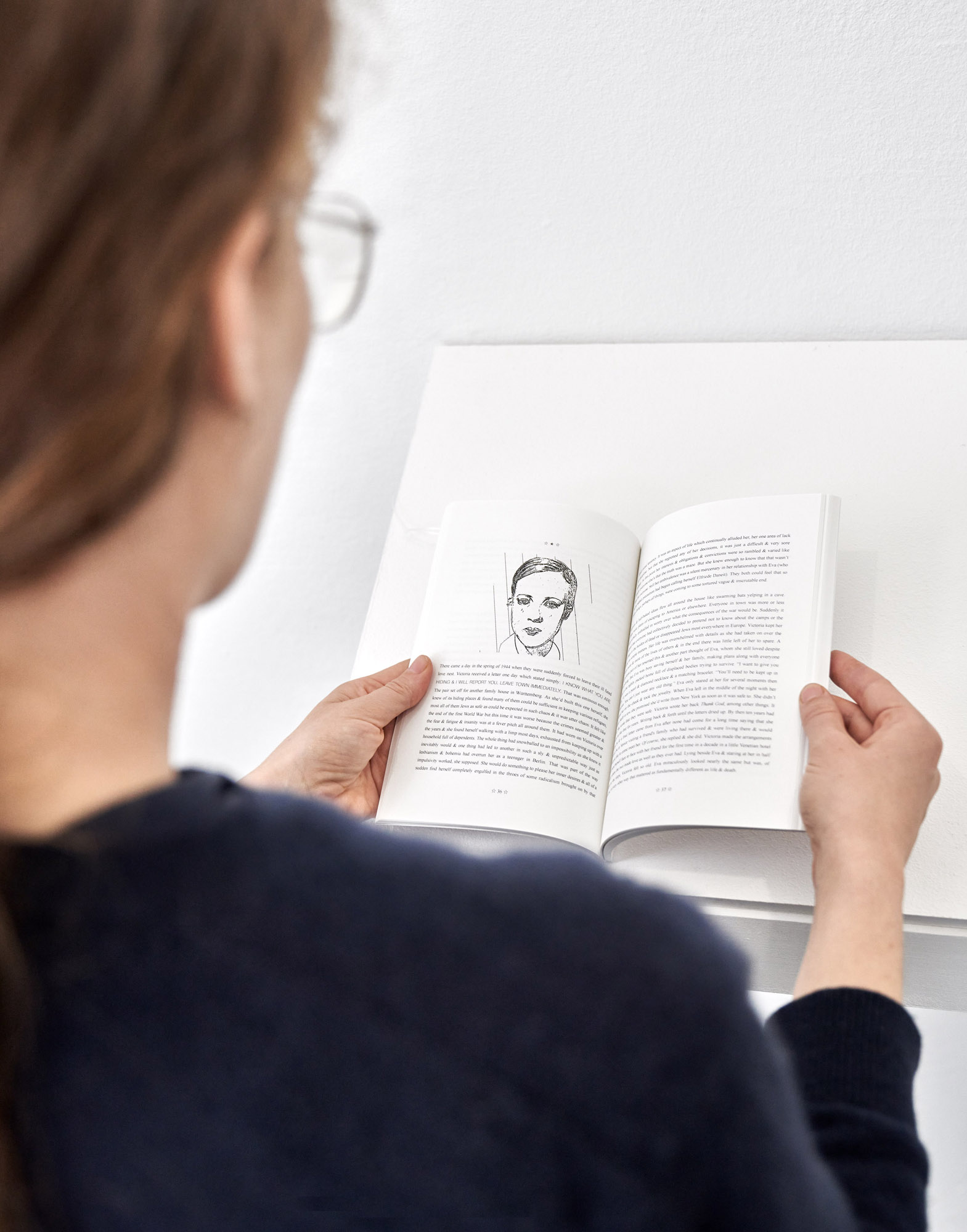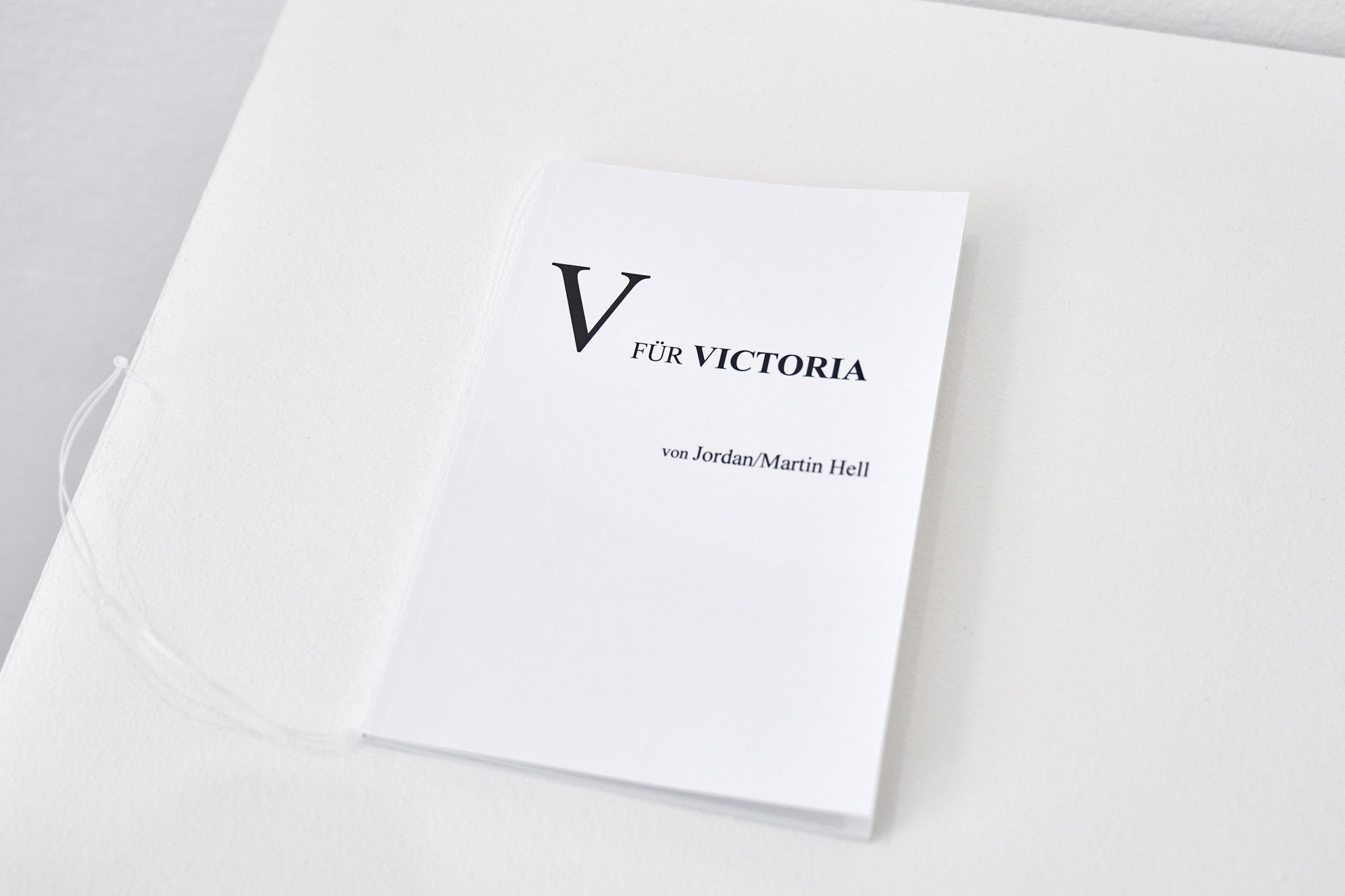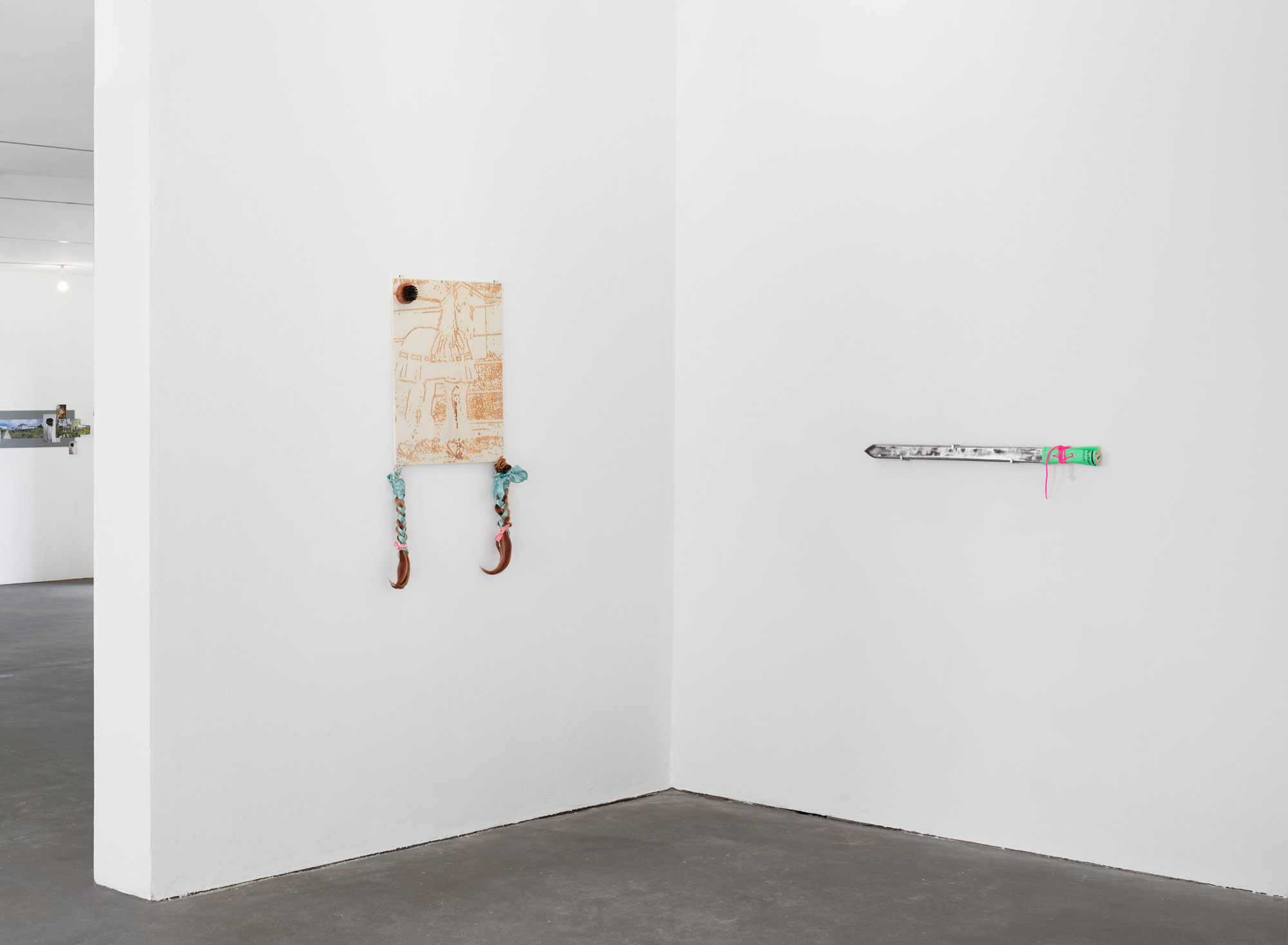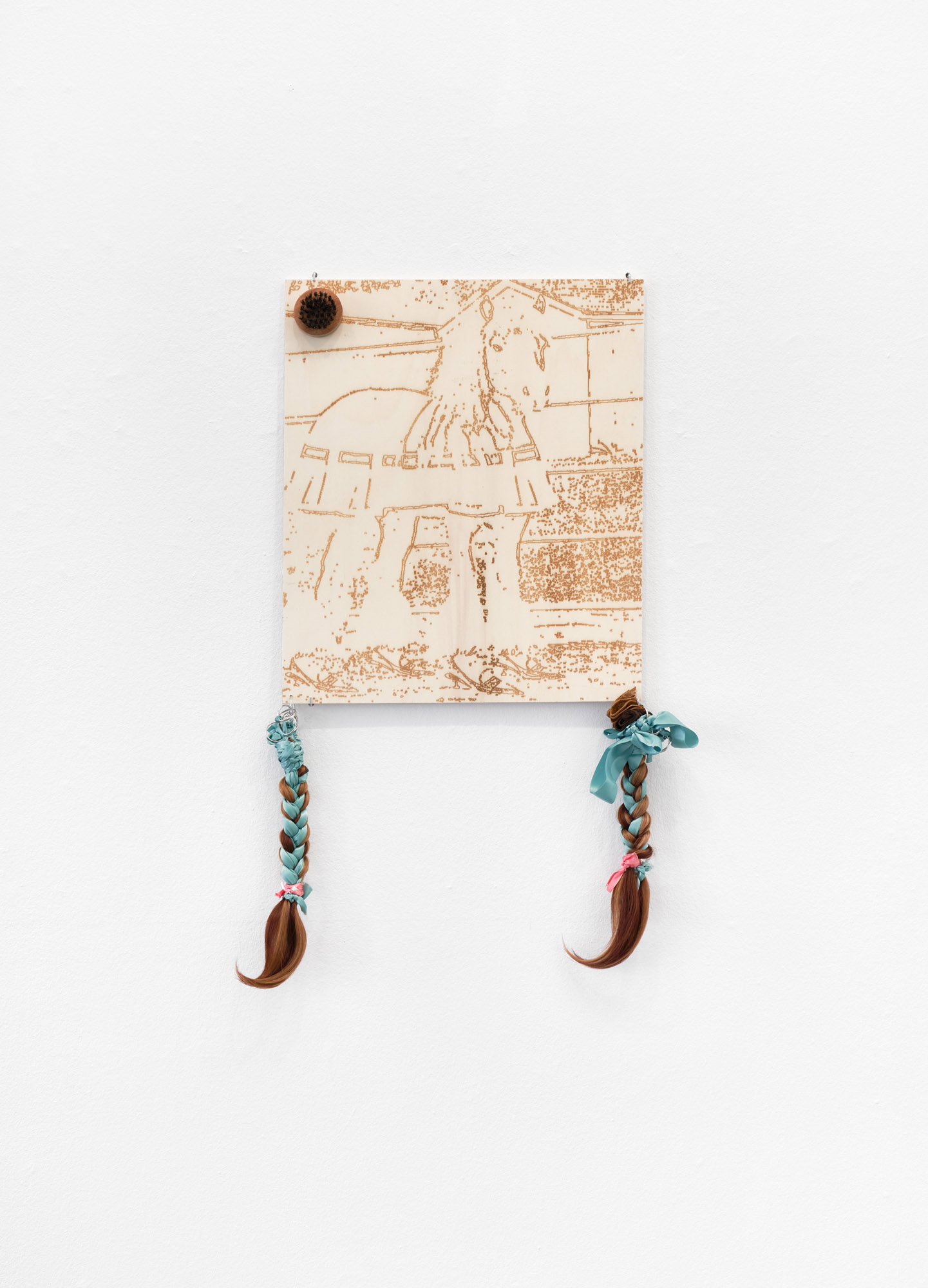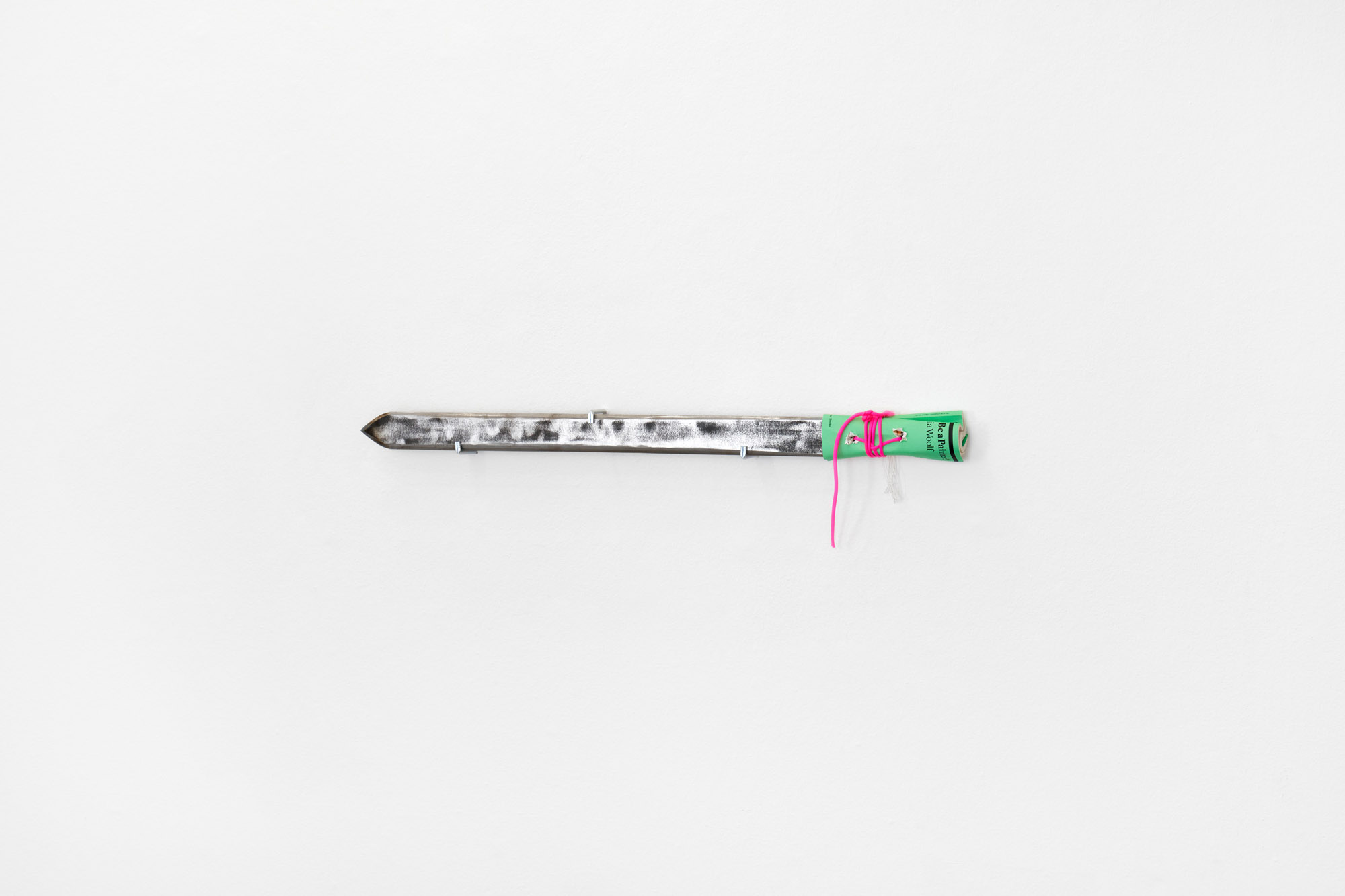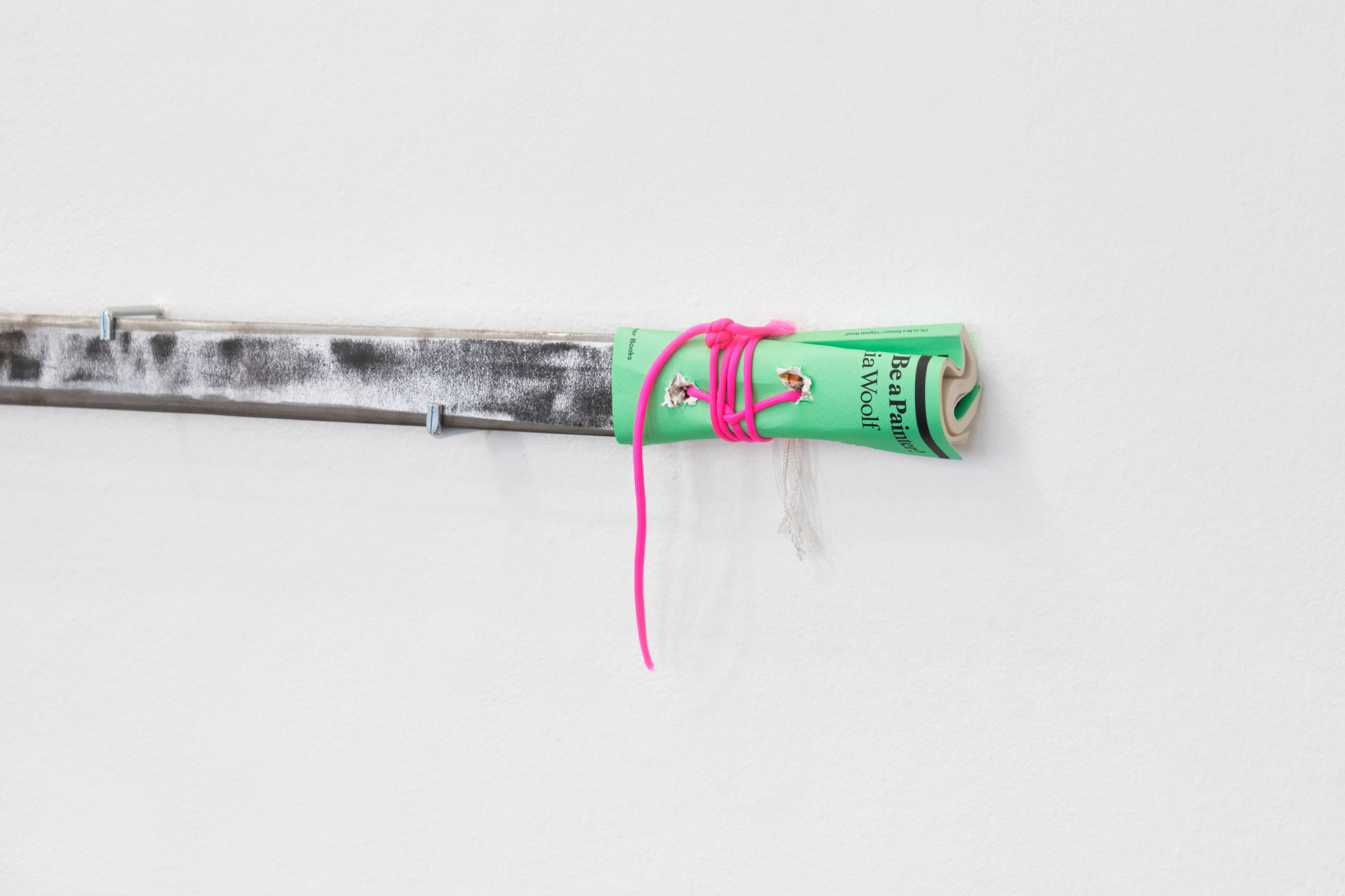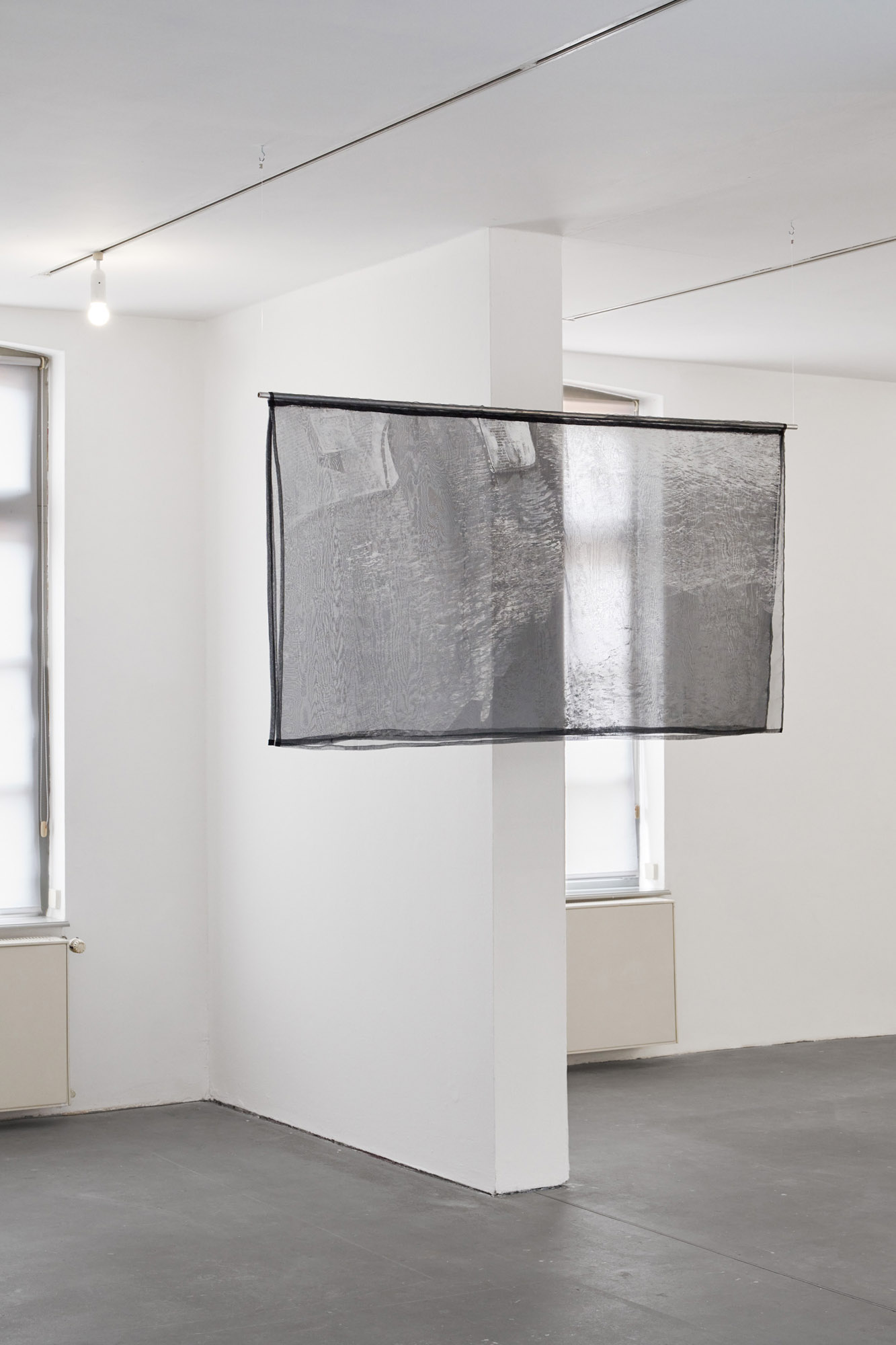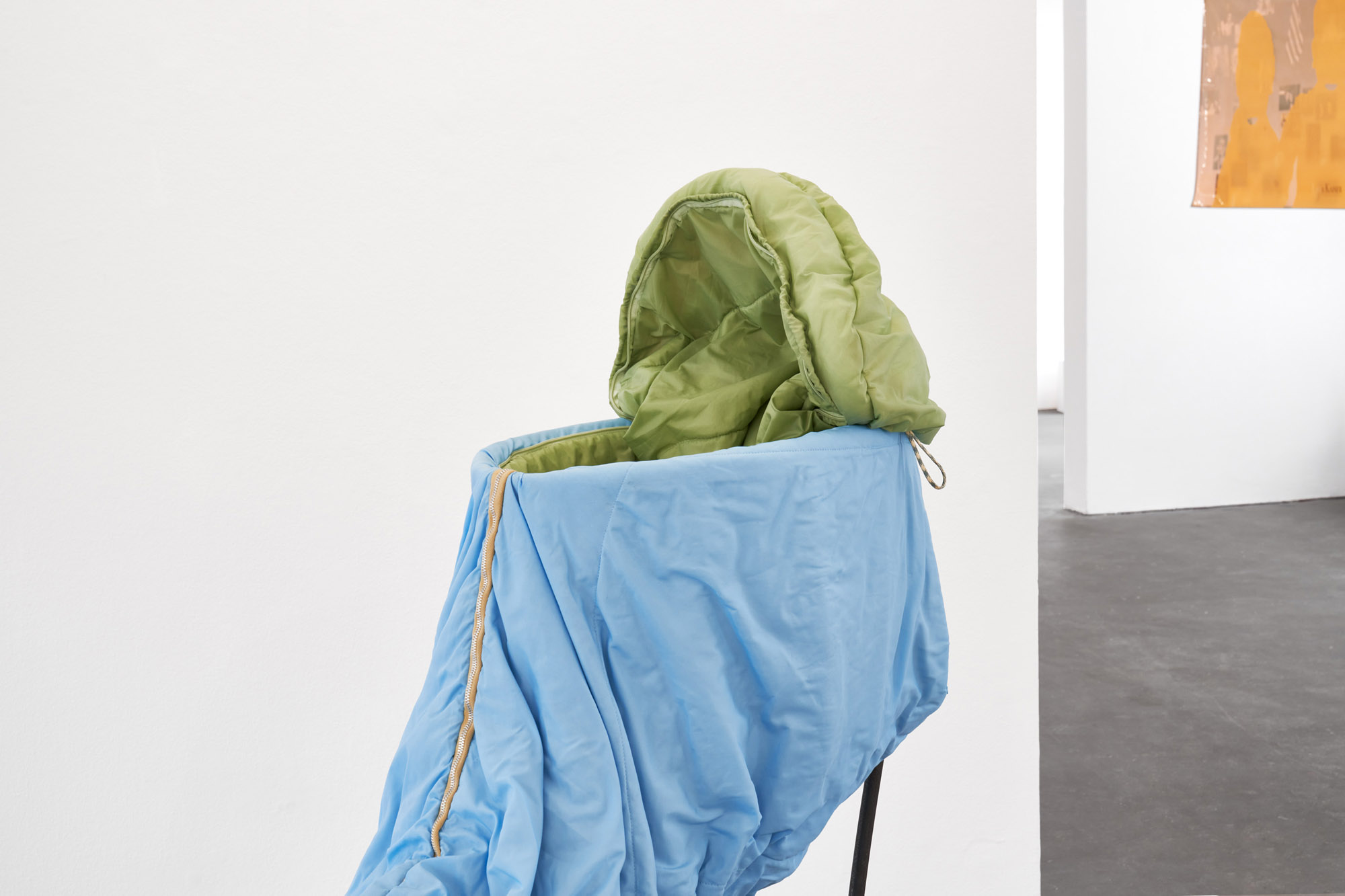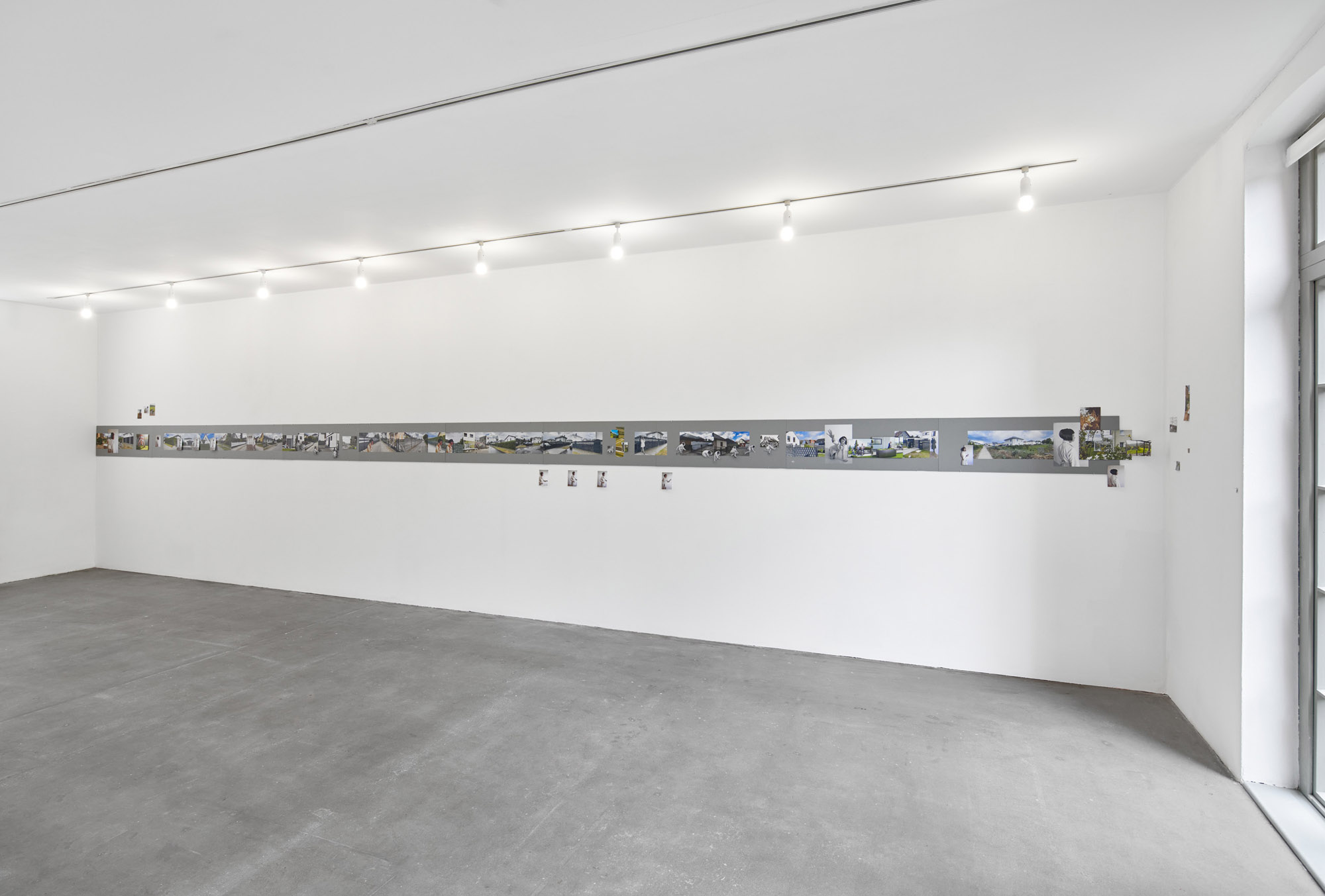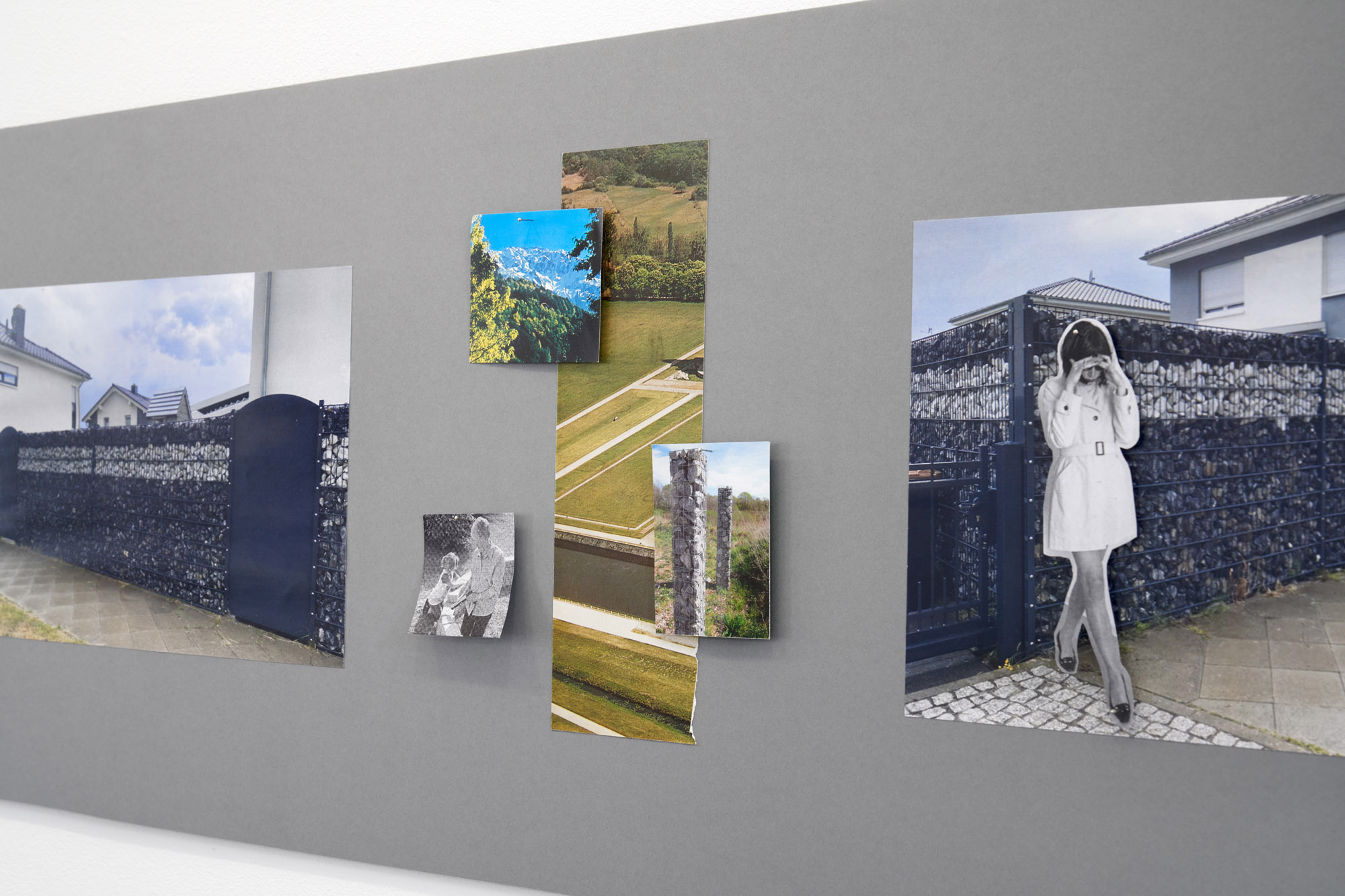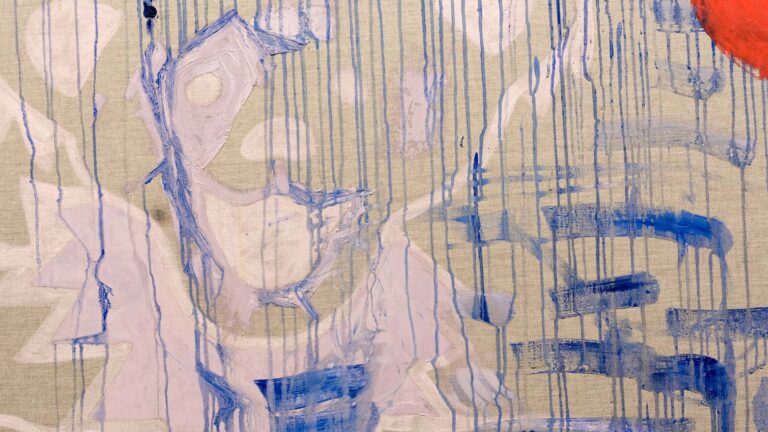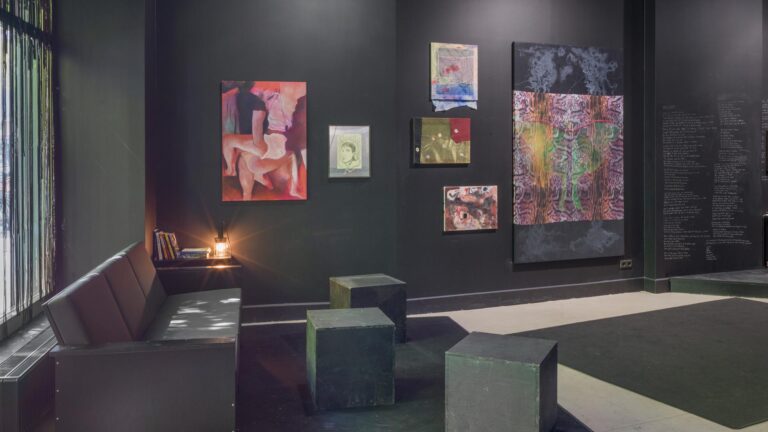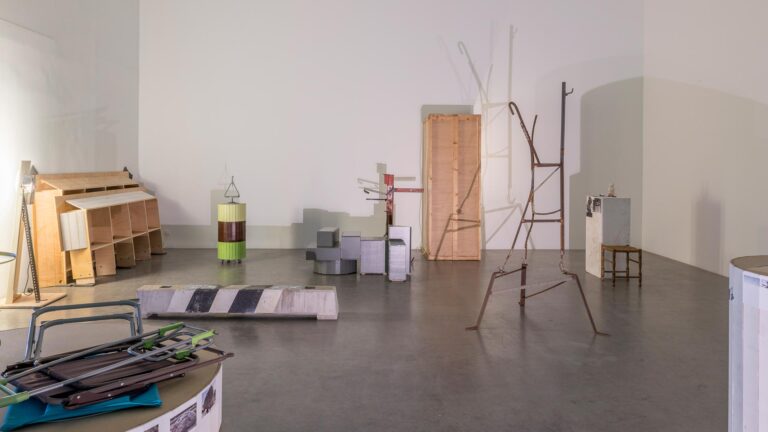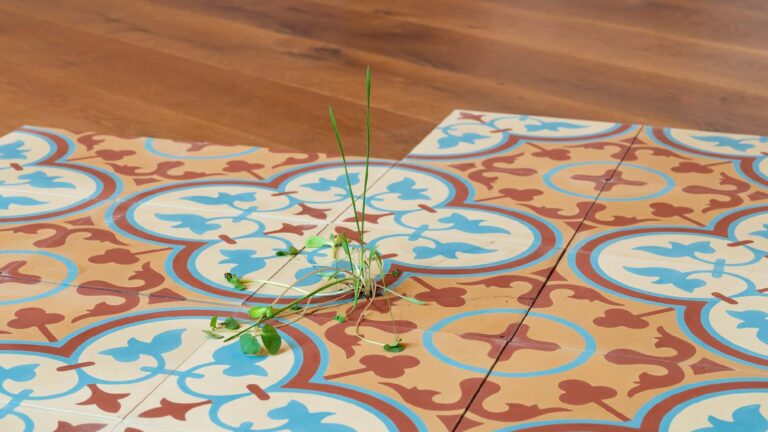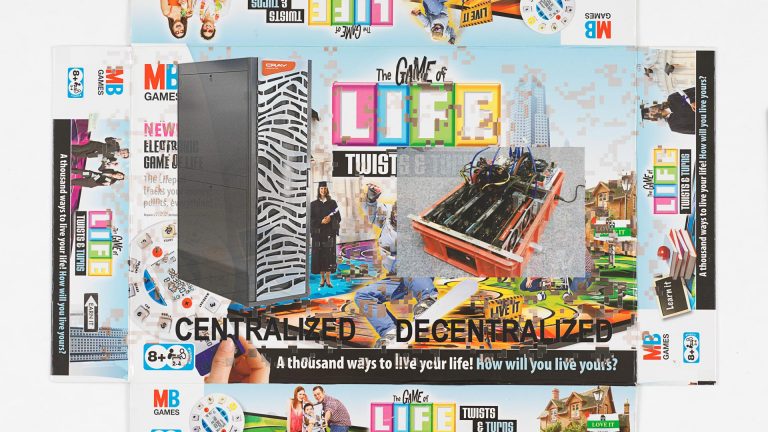Artists: Tanya V. Abelson, Philipp Gufler, Jordan/Martin Hell, François Pisapia, Pauli Scharlach
Exhibition title: The Burnt Letters of Victoria
Curated by: Paula Kommoss and Muriel Meyer
Venue: Kunstverein Grafschaft Bentheim, Neuenhaus, Germany
Date: August 28 – September 18, 2022
Photography: def image / all images copyright and courtesy of the artists and Kunstverein Grafschaft Bentheim, Neuenhaus
No, what truly made the evening one of permanent significance & consternation was something she witnessed in the lady’s powder room. It was unmistakable & yet completely unimaginable. A woman was leaning down & kissing another woman seated upon a chaise.
Jordan Martin/Hell, “V for Victoria”, 2022, p. 15.
In the glittering evenings of turn of the century Berlin, Victoria zu Bentheim (1887 – 1961) encountered another world, and another way of living that she had never before imagined possible. A sheltered bourgeois princess turned architecture student, Victoria’s normative worldview was shattered – and she wanted to never look back.
Long since destroyed, Princess Victoria’s letters have attained the status of myth: a whispered anecdote of vanished promise that bore witness to her life, ideas, doubts, and the search for her true self. At the time, it was common for authors to make and keep carbon copies of their letters, or to demand the return of any compromising material from their recipient. It is likely Victoria kept all of her most intimate conversations in her possession, mementos or keepsakes of romantic entanglements and social upheaval, only to be burnt shortly before her death. The evidence of her life that was written in her own hand has turned to ashes, whilst the narrow chronology of the Bentheim family’s aristocratic historiography was preserved through rigorous and prescriptive archival constructions. Today, we can only speculate about the desires, secrets, and rebellion that Victoria captured on paper.
Victoria zu Bentheim was one of the first women to study architecture at the Royal Technical University in Berlin, over a period spanning from 1913 to 1919. There, she learned how to manipulate industrial materials, test out forms and assess structural relationships. She was trained to claim the creative act for herself in a world that was dominated by men. Her unerring self-determination met a forceful will to design that resulted in buildings that have survived to this day. Yet her designs speak of historical revisionism: for example, a memorial to the fallen soldiers of World War I rendered in a style meant to evoke the grandeur of a lost age. Her houses testify to a romanticised era that no longer existed. Both ingenious and disconcerting, her image haunts an architectural history that seemingly holds on to the façades of the past, even whilst in the grips of the transition to modernity.
In the annals of history, Victoria is named as one of Germany’s first female architects, and her efforts to rescue Jewish people during National Socialism are well documented, including hiding two Jewish women after her own resignation from the NSDAP. But the records of Victoria’s own desires – a desire that went beyond heterosexual norms – are missing, and with them the anticipation, longing, and marked independence that she rendered permanent, if for only a fleeting moment. We will never know what was written – transcribed, confessed, witnessed – in their pages.
The exhibition was made possible by the support of the Niedersächsische Ministerium für Wissenschaft und Kultur, the Landkreis Grafschaft Bentheim, the Stadt- und Samtgemeinde Neuenhaus, the Kunsthalle Osnabrück, the TonArt Studio GmbH Osnabrück, the Städtische Galerie Nordhorn and the Kunsthalle Lingen.
Jordan/Martin Hell, V for Victoria, 2022, short novel 94 pages, EN + DE, translated from English into German Maxi Wallenhorst, edited by Paula Kommoss and Muriel Meyer, Kunstverein Grafschaft Bentheim. Photo Jens Gerber, kvgb 2022
Jordan/Martin Hell, V for Victoria, 2022, short novel 94 pages, EN + DE, translated from English into German Maxi Wallenhorst, edited by Paula Kommoss and Muriel Meyer, Kunstverein Grafschaft Bentheim. Photo Jens Gerber, kvgb 2022
Jordan/Martin Hell, V for Victoria, 2022, short novel 94 pages, EN + DE, translated from English into German Maxi Wallenhorst, edited by Paula Kommoss and Muriel Meyer, Kunstverein Grafschaft Bentheim. Photo Jens Gerber, kvgb 2022
Jordan/Martin Hell,The Pony, 2022, laser-cut on wood, brush, loops, metal rings, human hair, 105 x 52 cm. Oh, to Be a Painter!, 2022, metal, paperback, string, ca. 85 x 10 cm. Philipp Gufler, Lana Kaiser, 2020, video, 13 min loop, Courtesy Galerie BQ, Berlin. François Pisapia & Pauli Scharlach, Die Ausreißerin (The Runaway), 2022, Wall collage made of various materials, dimensions variable. Photo Jens Gerber, kvgb 2022
Jordan/Martin Hell,The Pony, 2022, laser-cut on wood, brush, loops, metal rings, human hair, 105 x 52 cm. Oh, to Be a Painter!, 2022, metal, paperback, string, ca. 85 x 10 cm. François Pisapia & Pauli Scharlach, Die Ausreißerin (The Runaway), 2022, Wall collage made of various materials, dimensions variable. Photo Jens Gerber, kvgb 2022
Jordan/Martin Hell, The Pony, 2022, laser-cut on wood, brush, loops, metal rings, human hair, 105 x 52 cm
Jordan/Martin Hell, Oh, to Be a Painter!, 2022, metal, paperback, string, ca. 85 x 10 cm. Photo Jens Gerber, kvgb 2022
Jordan/Martin Hell, Oh, to Be a Painter!, 2022, metal, paperback, string, ca. 85 x 10 cm. Photo Jens Gerber, kvgb 2022
Philipp Gufler, Quilt #12 (Ben d’Armagnac), 2016, silkscreen print on fabric, 95 x 181 cm, Courtesy Galerie BQ, Berlin. Lana Kaiser, 2020, video, 13 min loop, Courtesy Galerie BQ, Berlin. François Pisapia & Pauli Scharlach, Die Ausreißerin (The Runaway), 2022, Wall collage made of various materials, dimensions variable. Photo Jens Gerber, kvgb 2022
Philipp Gufler, Quilt #23 (Wies Smals), 2018, silkscreen print on fabric, 94 x 166.5 cm, Quilt #15 (Die Freundin – das ideale Freundschaftsblatt), 2016, silkscreen print on fabric, 97 x 177 cm, Courtesy Galerie BQ, Berlin. François Pisapia & Pauli Scharlach, Die Ausreißerin (The Runaway), 2022, Wall collage made of various materials, dimensions variable. Photo Jens Gerber, kvgb 2022
Philipp Gufler, Quilt #23 (Wies Smals), 2018, silkscreen print on fabric, 94 x 166.5 cm, Courtesy Galerie BQ, Berlin. Quilt #26 (Lana Kaiser), 2018, silkscreen print on fabric, 90 x 180 cm, Courtesy Galerie BQ, Berlin. Quilt #12 (Ben d’Armagnac), 2016, silkscreen print on fabric, 95 x 181 cm, Courtesy Galerie BQ, Berlin. Quilt #15 (Die Freundin – das ideale Freundschaftsblatt), 2016, silkscreen print on fabric, 97 x 177 cm, Courtesy Galerie BQ, Berlin. Photo Jens Gerber, kvgb 2022
Philipp Gufler, Quilt #26 (Lana Kaiser), 2018, silkscreen print on fabric, 90 x 180 cm, Courtesy Galerie BQ, Berlin. Photo Jens Gerber, kvgb 2022
Philipp Gufler, Quilt #12 (Ben d’Armagnac), 2016, silkscreen print on fabric, 95 x 181 cm, Courtesy Galerie BQ, Berlin. Photo Jens Gerber, kvgb 2022
Tanya V. Abelson, Ship of Dreams, 2022, textile and metal, 120 x 60 x 130 cm, Courtesy Galerie Anita Beckers Frankfurt. Philipp Gufler, Quilt #15 (Die Freundin – das ideale Freundschaftsblatt), 2016, silkscreen print on fabric, 97 x 177 cm, Courtesy Galerie BQ, Berlin. Quilt #26 (Lana Kaiser), 2018, silkscreen print on fabric, 90 x 180 cm, Courtesy Galerie BQ, Berlin. Quilt #12 (Ben d’Armagnac), 2016, silkscreen print on fabric, 95 x 181 cm, Courtesy Galerie BQ, Berlin. Photo Jens Gerber, kvgb 2022
Tanya V. Abelson, Ship of Dreams, 2022, textile and metal, 120 x 60 x 130 cm, Courtesy Galerie Anita Beckers Frankfurt. Philipp Gufler, Quilt #26 (Lana Kaiser), 2018, silkscreen print on fabric, 90 x 180 cm, Courtesy Galerie BQ, Berlin. Photo Jens Gerber, kvgb 2022
Tanya V. Abelson, Ship of Dreams, 2022, textile and metal, 120 x 60 x 130 cm, Courtesy Galerie Anita Beckers Frankfurt. François Pisapia & Pauli Scharlach, Die Ausreißerin (The Runaway), 2022, Wall collage made of various materials, dimensions variable. Photo Jens Gerber, kvgb 2022
François Pisapia & Pauli Scharlach, Die Ausreißerin (The Runaway), 2022, Wall collage made of various materials, dimensions variable. Photo Jens Gerber, kvgb 2022
François Pisapia & Pauli Scharlach, Die Ausreißerin (The Runaway), 2022, Wall collage made of various materials, dimensions variable (detail). Photo Jens Gerber, kvgb 2022
François Pisapia & Pauli Scharlach, Die Ausreißerin (The Runaway), 2022, Wall collage made of various materials, dimensions variable (detail). Photo Jens Gerber, kvgb 2022
François Pisapia & Pauli Scharlach, Die Ausreißerin (The Runaway), 2022, Wall collage made of various materials, dimensions variable (detail). Photo Jens Gerber, kvgb 2022
François Pisapia & Pauli Scharlach, Die Ausreißerin (The Runaway), 2022, Wall collage made of various materials, dimensions variable (detail). Photo Jens Gerber, kvgb 2022
François Pisapia & Pauli Scharlach, Die Ausreißerin (The Runaway), 2022, Wall collage made of various materials, dimensions variable (detail). Photo Jens Gerber, kvgb 2022


